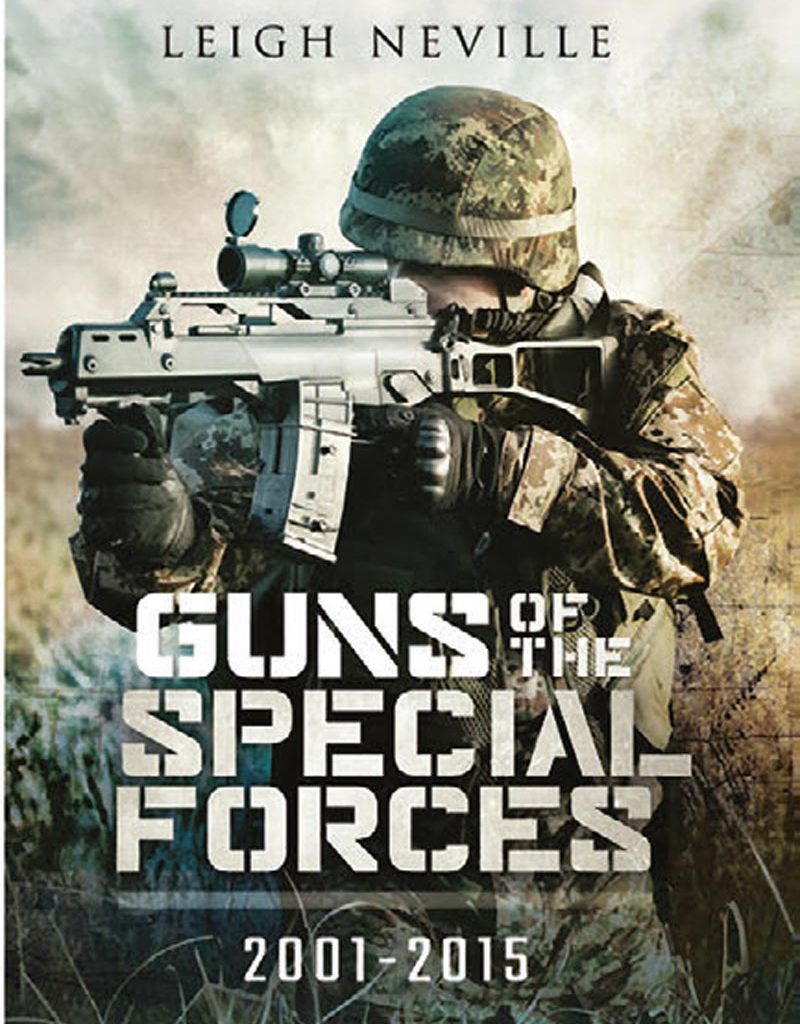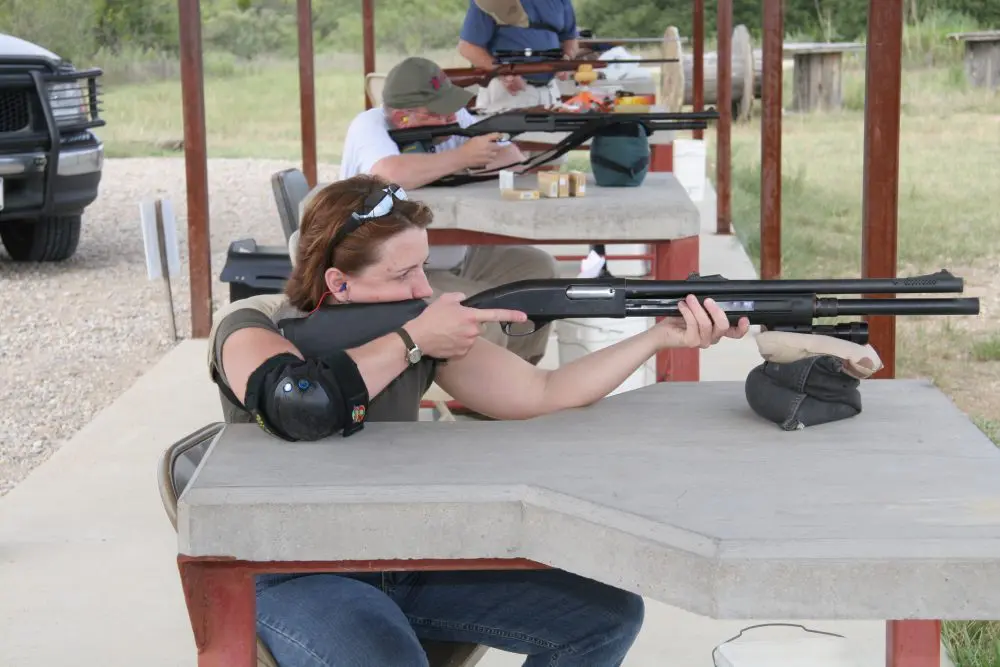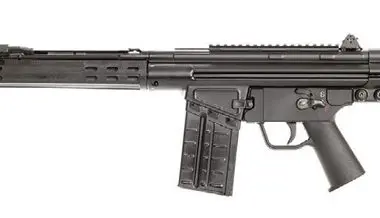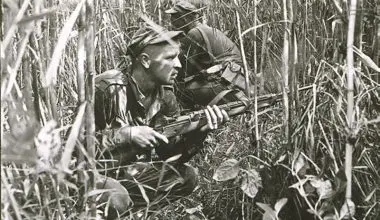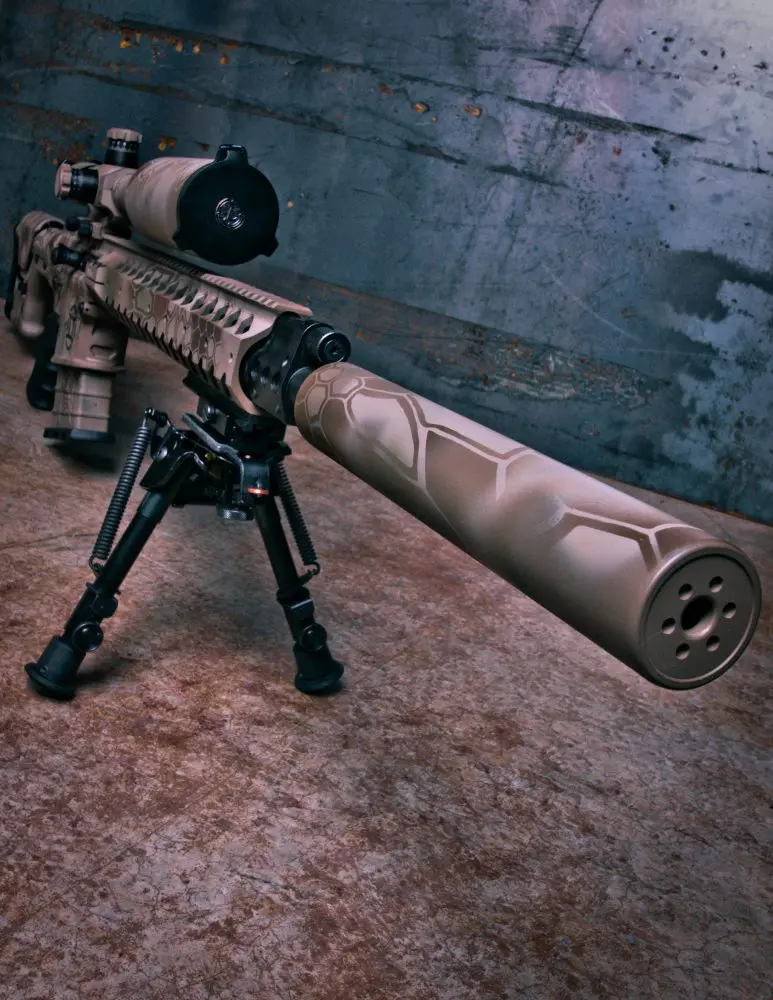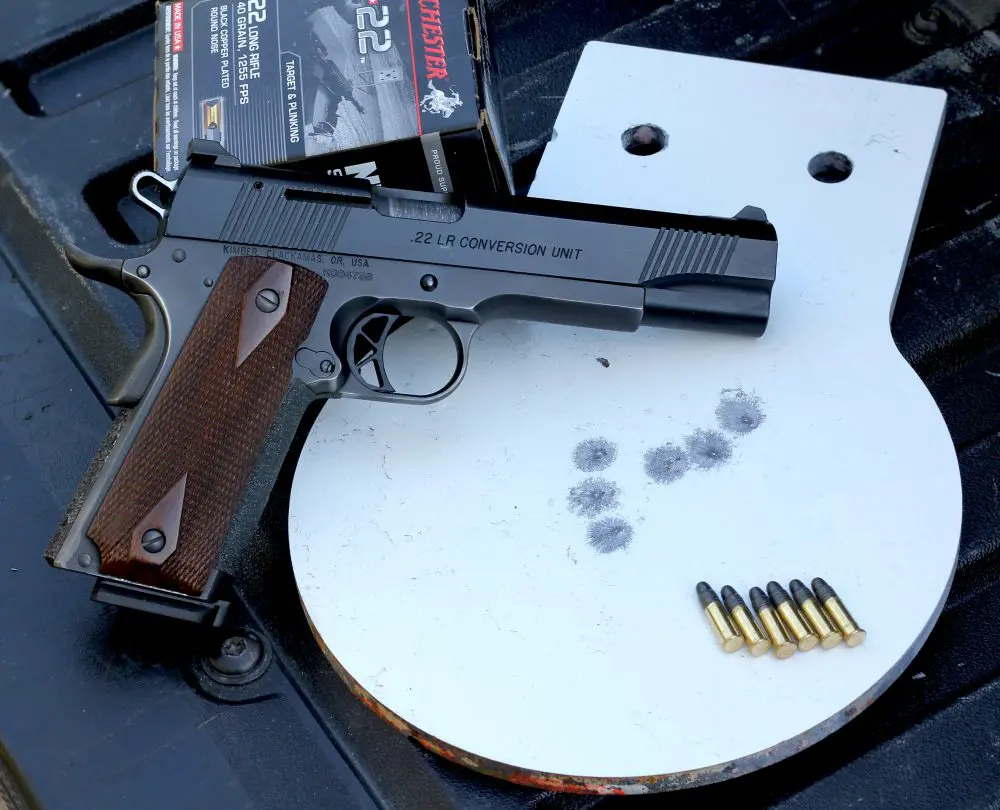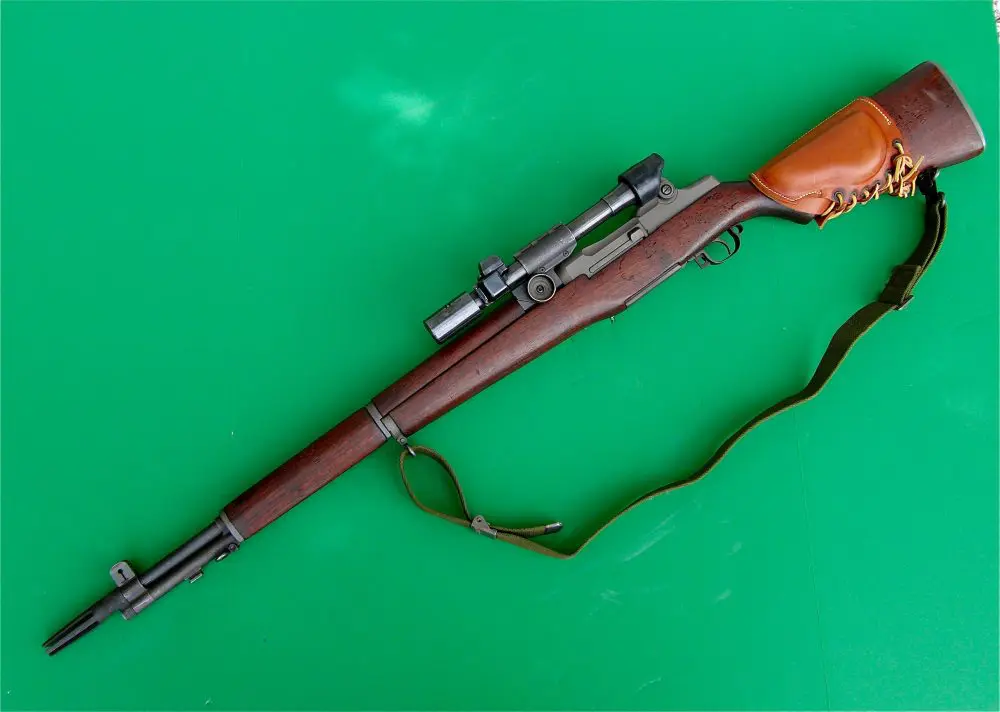Books on weapons used by special forces are written fairly often, but usually aren’t very “special.” They’re often a compilation of photos obtained from manufacturers intermixed with some military PR photos and tables of weapons specs.
Some are marginally useful for quick reference to compare overall length of weapons variations or cyclic rate, but not much else. However, two recent books on the subject are worth reviewing for S.W.A.T. readers.
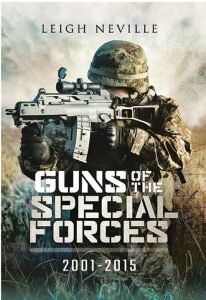
GUNS OF THE SPECIAL FORCES 2001-2015
Leigh Neville’s Guns of the Special Forces 2001-2015 is a cut above most of the books that purport to review special ops weapons. Its limitation to the War on Terror years allows coverage of the many weapon developments that have taken place as special operations units have been constantly deployed and in action over the last decade and a half.
Neville is an Australian who does not seem to have a special ops background himself, but who has taken the trouble to interview operators about weapons performance in combat. He also has enough basic weapons knowledge and has done enough research that he has gone beyond many books on small arms published in the UK.
Having said that, he does make some mistakes. For example, he writes about the initial U.S. adoption of the semiautomatic AR-15. Indeed, the Air Force initially adopted the AR- 15, as it did not get the designation M16 until adopted by the U.S. Army. But the AR-15s adopted by the Air Force were select-fire weapons. It’s an easy mistake to make. He doesn’t make many, though.
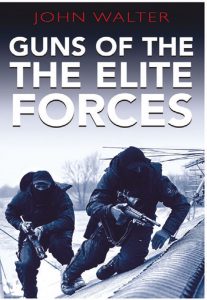
In his introduction, he does a good job setting forth the basic missions of special ops units, allowing the reader to understand how various weapons fit these missions. Like most S.W.A.T. readers, I would have preferred more hands-on shooting reviews, but since Neville is an Australian civilian, he did not have a chance to actually shoot most of the weapons.
For those he did shoot, he offers comments, but not ones that normally apply to combat (e.g., pros and cons of mounting accessories on different platforms—weight versus usefulness; how the rifle or carbine performs on a jump test; do the design and magazine length allow the operator to go prone quickly). But he does offer enough operator comments to give insight into weapon performance.
The book is broken into nine logical and well-organized chapters:
- Combat Pistols
- Submachine Guns and Personal Defense Weapons
- Assault Rifles and Carbines
- Battle Rifles, Special Purpose and Designated Marksman Rifles
- Combat Shotguns
- Sniper and Anti-Materiel Rifles
- Squad Automatic Weapons and Machine Guns
- Grenades, Grenade Launchers, and Rockets
- Conclusion and the Future
He covers some trends very well. For example, the decline of the MP5 and rise of the M4, and new designs chambered for the .300 Blackout are well explained. In fact, each chapter has a section on ammunition, which is quite useful.
A lot of text is devoted to the pros and cons of the M4 and other 5.56x45mm weapons. Neville correctly explains that special ops units often have to tailor their weapons to the mission.
Sometimes a light, short weapon such as the M4 is useful, while at other times, a longer-range, harder-hitting weapon is more desirable. Some units carry a mix of weapons, giving operators multiple platforms from which to choose. Weapons like the SCAR MK 17, which can be quickly configured with different barrel lengths, receive perceptive coverage and explanation of advantages.
Guns of the Special Forces 2001- 2015 is the best book I’ve read on this subject, and I highly recommend it. I would like to have seen more on Russian and Chinese special ops weapons, but coverage of the weapons used by U.S., British, Australian, Canadian, and other allied special forces units is excellent. I rate this book highly enough that it now sits on the small shelf of reference books I keep next to desk where I write.
GUNS OF THE ELITE FORCES
Guns of the Elite Forces by John Walter is actually a paperback reprint of a book from 2005, so it is not as topical as the one that focuses on 2001 to 2015. But it does have some informative sections.
For one thing, it covers weapons developed for clandestine and special operations usage in World War II. As a result, weapons such as the M1 Carbine, suppressed Welrod and High Standard Model B pistols, and StG44 assault rifle receive some coverage to put later developments into context.
There are some interesting historical comments about the MP43/StG44 and the claims that it allowed German troops to break out of the Kholm Pocket on the Eastern Front. Walter shows that too few of the fledgling assault rifle would have been available to have had a major influence on the battle. He also covers some Russian weapons.
As he moves into the post-World War II period, the author shows how the assault rifle influenced modern combat, giving special attention to the AK-47.
On the other hand, Western powers, including airborne and special forces units, opted for full-powered 7.62x51mm battle rifles like the M14, FN FAL, and HK G3. He does a good job of showing that various counterinsurgency wars influenced adoption of lighter caliber assault rifles, such as the M16, while pointing out that the full-sized battle rifle still showed its value in conflicts such as the Falklands War.
He does not neglect the importance of compact optical battle sights, initially with the British L85 and Austrian AUG, but later with almost every combat rifle in the world, and how they have influenced modern combat.
Coverage of the weapons used on counter-terrorist operations is more historical than topical. For example, he discusses how the 9x19mm round and MP5 SMG became the most widely used weapons in hostage rescue ops, but there is no analysis of the replacement of the 9x19mm SMG by rifle-caliber carbines like the M4 during the War on Terror and the rationale for this evolution. Guns of the Special Forces 2001-2015 explains that much more effectively.
The bulk of Guns of the Elite Forces offers descriptions of the various types of weapons used in military and law enforcement, with some special emphasis on weapons with applicability to special ops (e.g., suppressed and underwater weapons). It is a useful reference book and a quick read.
Both books make nice additions to a tactical weapons reference library. But especially for S.W.A.T. readers, who are more sophisticated about tactical weapons, if you’re going to buy only one book, it should be Guns of the Special Forces 2001-2015.
